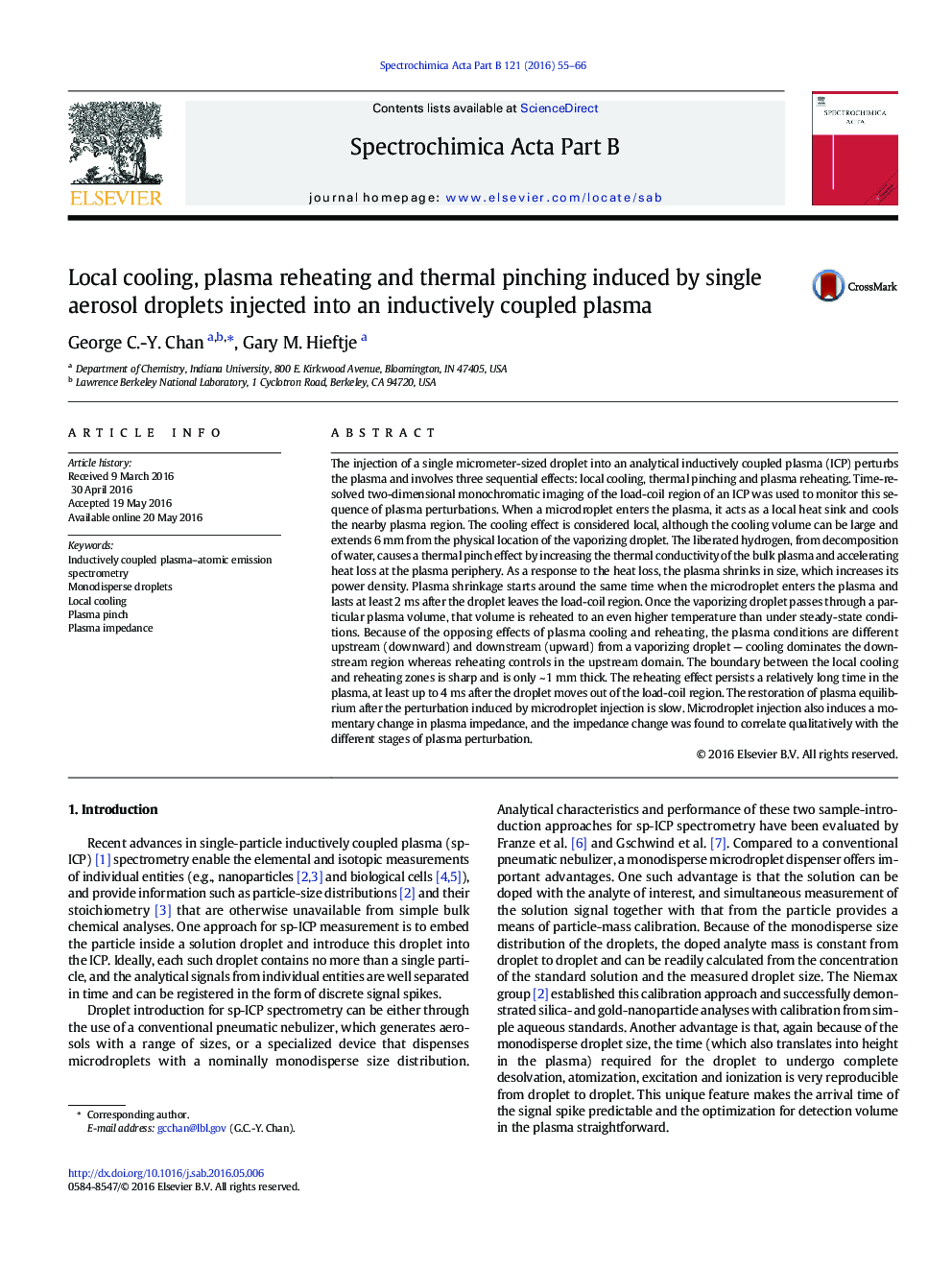| Article ID | Journal | Published Year | Pages | File Type |
|---|---|---|---|---|
| 1239609 | Spectrochimica Acta Part B: Atomic Spectroscopy | 2016 | 12 Pages |
•Followed plasma perturbations induced by single aerosol-droplet injections into ICP.•Noted three sequential effects: local cooling, thermal pinching & plasma reheating•Local cooling effect can extend 6 mm from a vaporizing droplet.•Thermal pinch effect causes plasma to shrink.•Immediately after droplet passage, plasma is reheated to even higher temperature.
The injection of a single micrometer-sized droplet into an analytical inductively coupled plasma (ICP) perturbs the plasma and involves three sequential effects: local cooling, thermal pinching and plasma reheating. Time-resolved two-dimensional monochromatic imaging of the load-coil region of an ICP was used to monitor this sequence of plasma perturbations. When a microdroplet enters the plasma, it acts as a local heat sink and cools the nearby plasma region. The cooling effect is considered local, although the cooling volume can be large and extends 6 mm from the physical location of the vaporizing droplet. The liberated hydrogen, from decomposition of water, causes a thermal pinch effect by increasing the thermal conductivity of the bulk plasma and accelerating heat loss at the plasma periphery. As a response to the heat loss, the plasma shrinks in size, which increases its power density. Plasma shrinkage starts around the same time when the microdroplet enters the plasma and lasts at least 2 ms after the droplet leaves the load-coil region. Once the vaporizing droplet passes through a particular plasma volume, that volume is reheated to an even higher temperature than under steady-state conditions. Because of the opposing effects of plasma cooling and reheating, the plasma conditions are different upstream (downward) and downstream (upward) from a vaporizing droplet — cooling dominates the downstream region whereas reheating controls in the upstream domain. The boundary between the local cooling and reheating zones is sharp and is only ~ 1 mm thick. The reheating effect persists a relatively long time in the plasma, at least up to 4 ms after the droplet moves out of the load-coil region. The restoration of plasma equilibrium after the perturbation induced by microdroplet injection is slow. Microdroplet injection also induces a momentary change in plasma impedance, and the impedance change was found to correlate qualitatively with the different stages of plasma perturbation.
